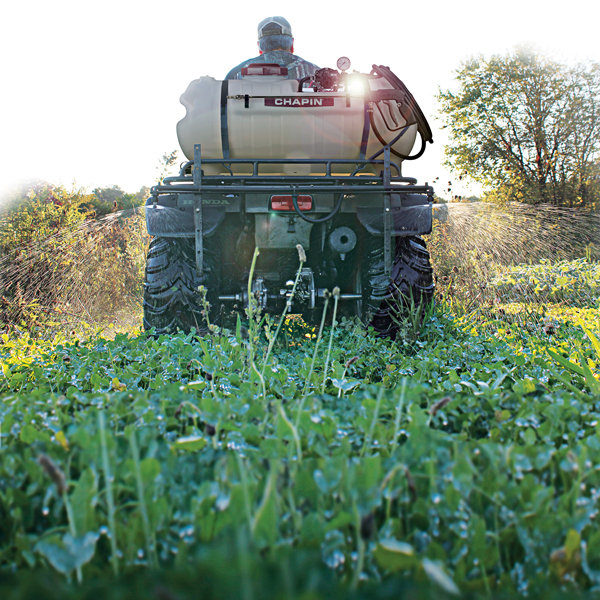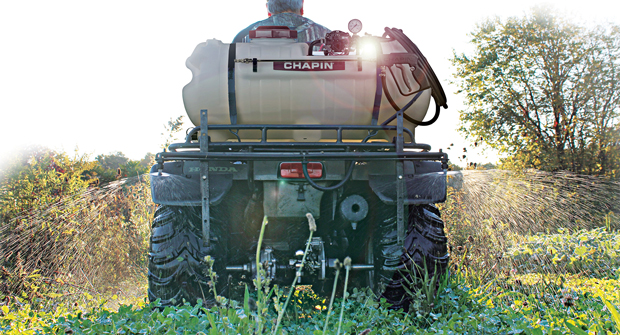
Keeping up with a busy spray schedule would be difficult without the help of properly functioning spray equipment.
To ensure a steady flow of customers — and revenue — lawn care operators (LCOs) should take the time to correctly maintain their tanks and sprayers.
“Your time is precious, the spray solutions are expensive and the results of your hard work are important,” says Anne Miller, sprayer technical expert at Chapin Manufacturing. “Maintaining your sprayer saves you time, money and improves the look of your landscaping.”
Landscape Management spoke with Miller and Rhett Clark, president and owner of Gregson-Clark Spraying Equipment, to find out what maintenance tasks LCOs should check off their lists.
Handheld and small mounted units
- Periodically check to make sure filters are clean and free of debris.
- Rinse the tank twice with water after each use. Be sure to pressurize the tank and spray water through the hose, wand and nozzle tip. Add a couple of drops of dish soap to the rinse water and continue to rinse the tank until all the bubbles are gone, Miller suggests. “By removing the spray solution, you are able to prevent chemical attack within the tank and prevent any cross contamination of residual spray solution the next time you use the tank,” she says. After rinsing the tank at the end of the season, leave it upside down with the pump removed in a warm, dry location.
- Be sure to always use the right sprayer for the right chemical, Miller says. In some cases, manufacturers design certain tanks to be more resistant to chemicals with low pH levels.
- When a handheld sprayer is set down between uses while out on the job, tip the tank with the bottom side up and spray out any product left in the hose and wand until only air is flowing. “This will reduce the chance of spray solution gumming up the filters and hose,” Miller says.
- If the nozzle tip becomes clogged, remove the tip and rinse it with water. “Do not try to poke a hole through the nozzle opening as you could damage it, and this may affect your spray pattern,” Miller says.
Large mounted sprayers
- Regularly inspect the hose, fittings and polyethylene tanks. Be aware that sunlight can degrade these components.
- Know the correct oil type for the engine, gear reduction and pump. Check oil levels daily. “Many engines have oil sensors in them and will not allow the engine to run in a low-oil condition,” Clark says. “The pump and gear reduction oil should remain steady under normal operation.”
- Inspect hose reels for loose and faulty wire connections. “Although reel motors can fail, the more likely cause of an electric reel not working is a faulty switch, solenoid or wire connection, particularly the ground wire,” Clark says. “It’s important to have a properly sized fuse or circuit breaker in the reel wiring assembly.” Also, be sure to grease the reel swivel monthly.
- Keep the suction strainer clean. A clogged strainer will result in poor system performance and premature diaphragm failure. “Often when a pump will not build or sustain pressure, the issue is on the suction side of the pump, either a clogged strainer or an air leak,” Clark says.
- Replace diaphragms after every 500 hours of use. Milky or missing oil in the pump site glass is an indication of diaphragm failure, Clark says. Having replacement diaphragms and pump oil in stock can help reduce downtime.


